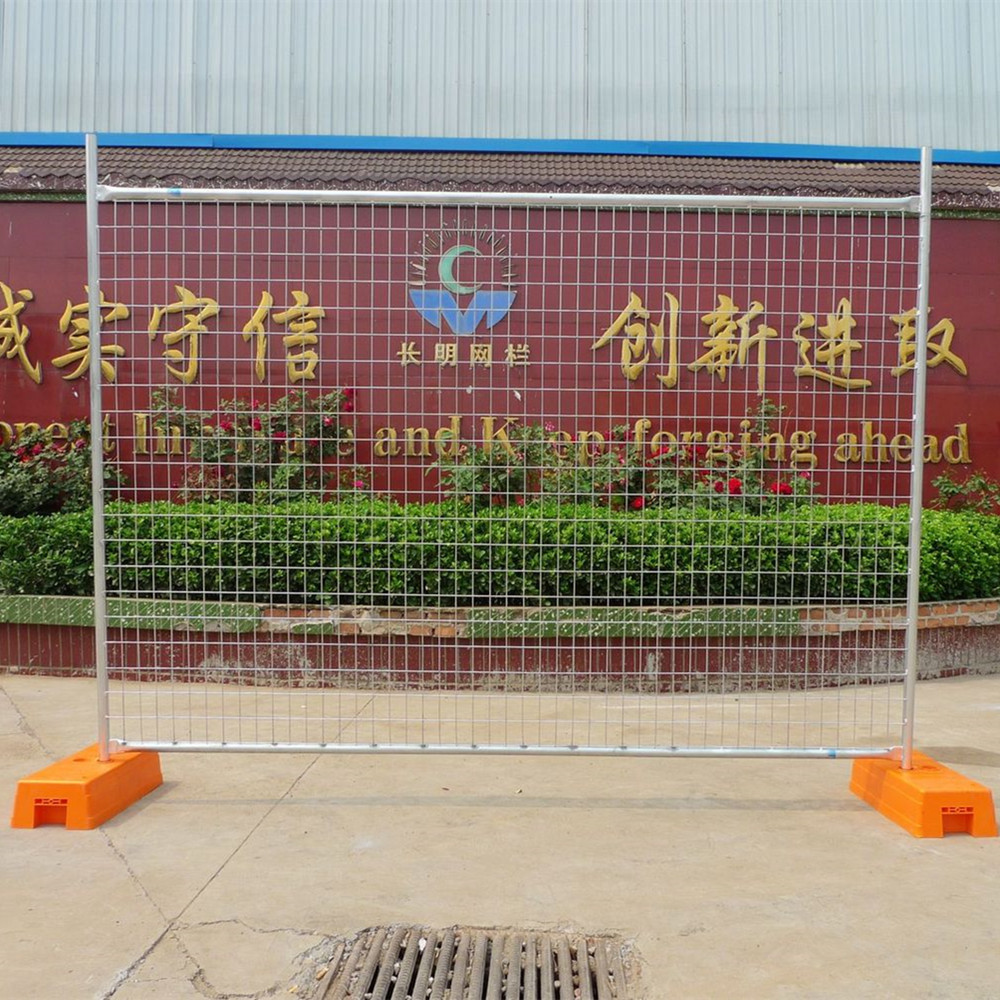We all know that the temporary fence is a very practical fence. Temporary Fence,Australia Temporary Fence,America Temporary Fence,Canada Temporary Fence Hebei Giant Metal Technology Co., Ltd. , https://www.wiremesh.pl
The reader's receiving range is affected by many factors, such as the frequency of the radio wave, the size and shape of the tag, the energy of the reader, the interference of metal objects, and Other radio frequency devices. In general, low-frequency passive tags have a receiving distance of less than one foot, high-frequency passive tags have a receiving distance of about three feet, and UHF tags have a receiving distance of ten to twenty feet. For semi-active and active tags using batteries, readers can receive signals of three hundred feet or more. For low frequency and high frequency radio frequencies, if the tag and reader antenna are the same size, the receiving distance can be calculated by multiplying the diameter of the antenna by 1.4. Within 30 centimeters in diameter, this rule applies.
What does LF, HF, UHF mean?
Like the radio we listen to, radio frequency tags and readers must be modulated to the same frequency to work. LF, HF, UHF correspond to different frequencies of radio frequency. LF stands for low frequency radio frequency, around 125KHz, HF stands for high frequency radio frequency, around 13.56MHz, UHF stands for UHF radio frequency, in the range of 850 to 910MHz.
Why use different frequencies?
In the operation there are four kinds of frequency bands, low frequency (125KHz), high frequency (13.54MHz), ultra-high frequency (850-910MFz), microwave (2.45GHz). Each frequency has its characteristics, is used in Different fields, so we must first select the right frequency to use correctly.
Do all countries use the same frequency?
No, the European UHF is 868 MHz, and the United States is 915 MHz. Japan currently does not allow UHF to be used in radio frequency technology. The government also regulates the power of the reader to limit its impact on other devices. Some organizations such as the Global Business Promotion Council are encouraging the government to remove restrictions. Tag and reader manufacturers are also developing the ability to use different frequency systems to avoid these problems.
How do we know which frequency suits our product?
Different frequencies have different characteristics, so their use is also varied. For example, low-frequency tags are cheaper than UHF tags, save energy, and penetrate scrap metal objects. They are best suited for objects with high water content, such as fruits. UHF has a wide range of applications and the speed of data transmission, but they are relatively energy-consuming, have weak penetrating power, do not have too much interference in the work area, and are suitable for monitoring the goods shipped from the harbor to the warehouse. When making a choice, it is best to consult the relevant experts, suppliers, and thus choose the correct radio frequency. I have heard that RF technology encounters water or metal does not work properly. Does it mean that it cannot be used to monitor canned or aqueous ingredients? Higher product?
no. Metals reflect radio frequency, and water absorbs radio frequency. Therefore, in this case, the function of the tag has a problem. However, the designed system can well avoid these problems.
What is a reader conflict?
One of the problems that radio frequency technology encounters is reader conflict, which means that the information received by one reader collides with the information received by another reader and overlaps. One way to solve this problem is to use TDMA technology. In simple terms, the reader is directed to receive signals at different times instead of at the same time. This ensures that the readers do not interfere with each other. However, items in the same area will be read twice, so it is necessary to establish a system to avoid this situation.
How does a passive reader work?
RF readers transmit information in a variety of ways and tags. The reader uses an antenna to form a magnetic field around it. The passive tag receives energy from the magnetic field and sends the signal to the reader. The reader converts the information into electronic information. Product Code.
Can all readers support different kinds of tags?
Not yet. Many companies produce readers that support radio frequency technology for new tags used in existing supply chains. Some readers only support new electronic product codes, some only support specific labels produced by certain manufacturers.
What kind of reader do I need?
Like readers and tags, it is necessary to determine the type and quantity of use by studying supply methods. For example, the requirement is to manage the inventory in and out of the warehouse, and the reader can be installed on the door of the dock for cargo entry and exit. If the requirement is to manage the product for a given customer, then the reader should not only be mounted on the door, it should also be mounted on the truck. If the requirement is to control the retail shelf, fixed or handheld devices can be used to facilitate automatic outbound record and count.
It is easy to transport, easy to move, and is very popular with everyone.
For example, if you want to build a house in your home, you need to protect people in this area from harm.
For example, to hold a concert, it is a good helper to maintain order.
And we often see roads on the road. Temporary Fence can make pedestrians on the road safe and prompt.
Temporary barriers apply to all aspects of our lives.
As a professional manufacturer of temporary fences, we wholeheartedly provide you with quality products.

RFID Reader Frequently Asked Questions
What is the effective range of radio waves received by the reader?